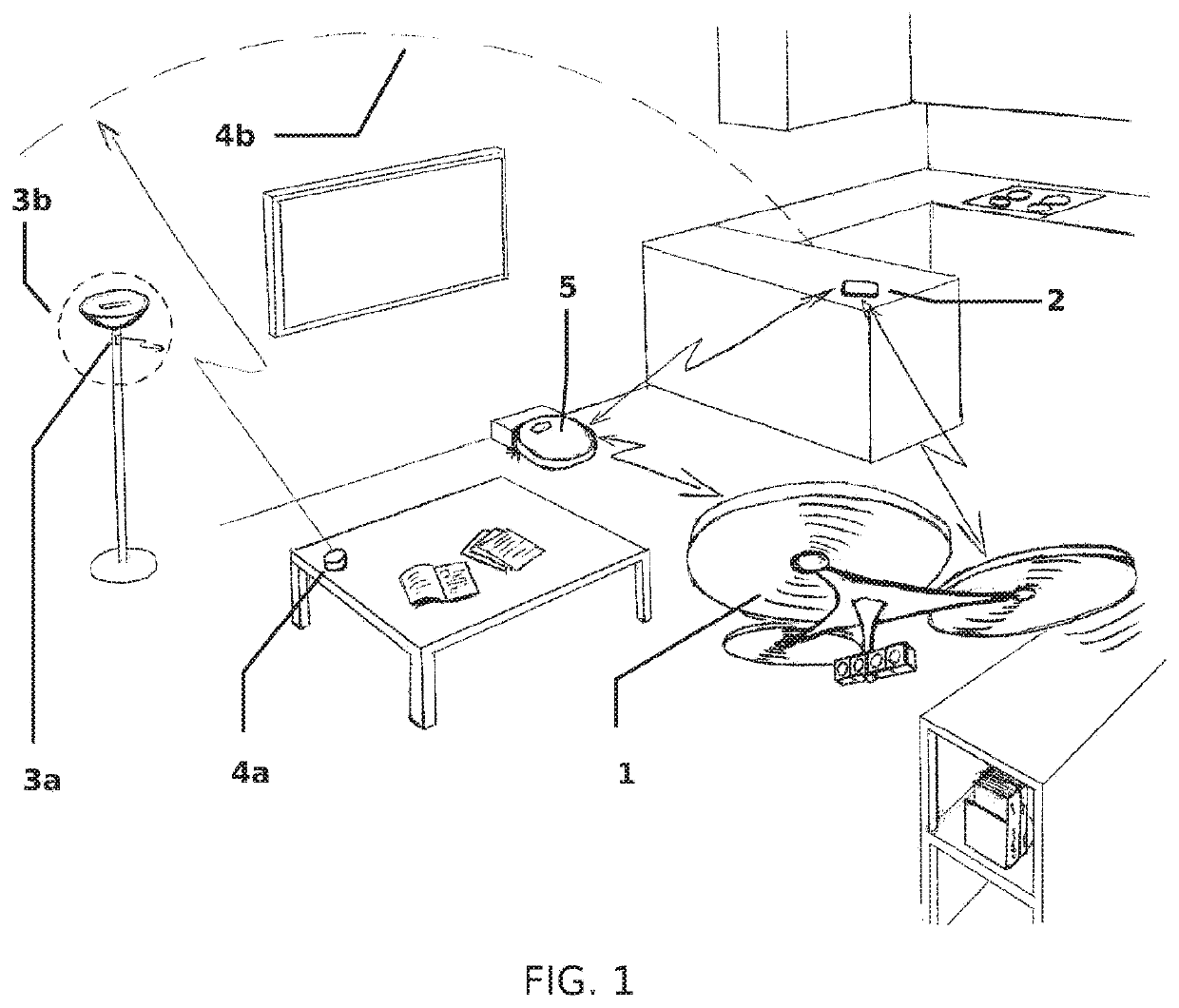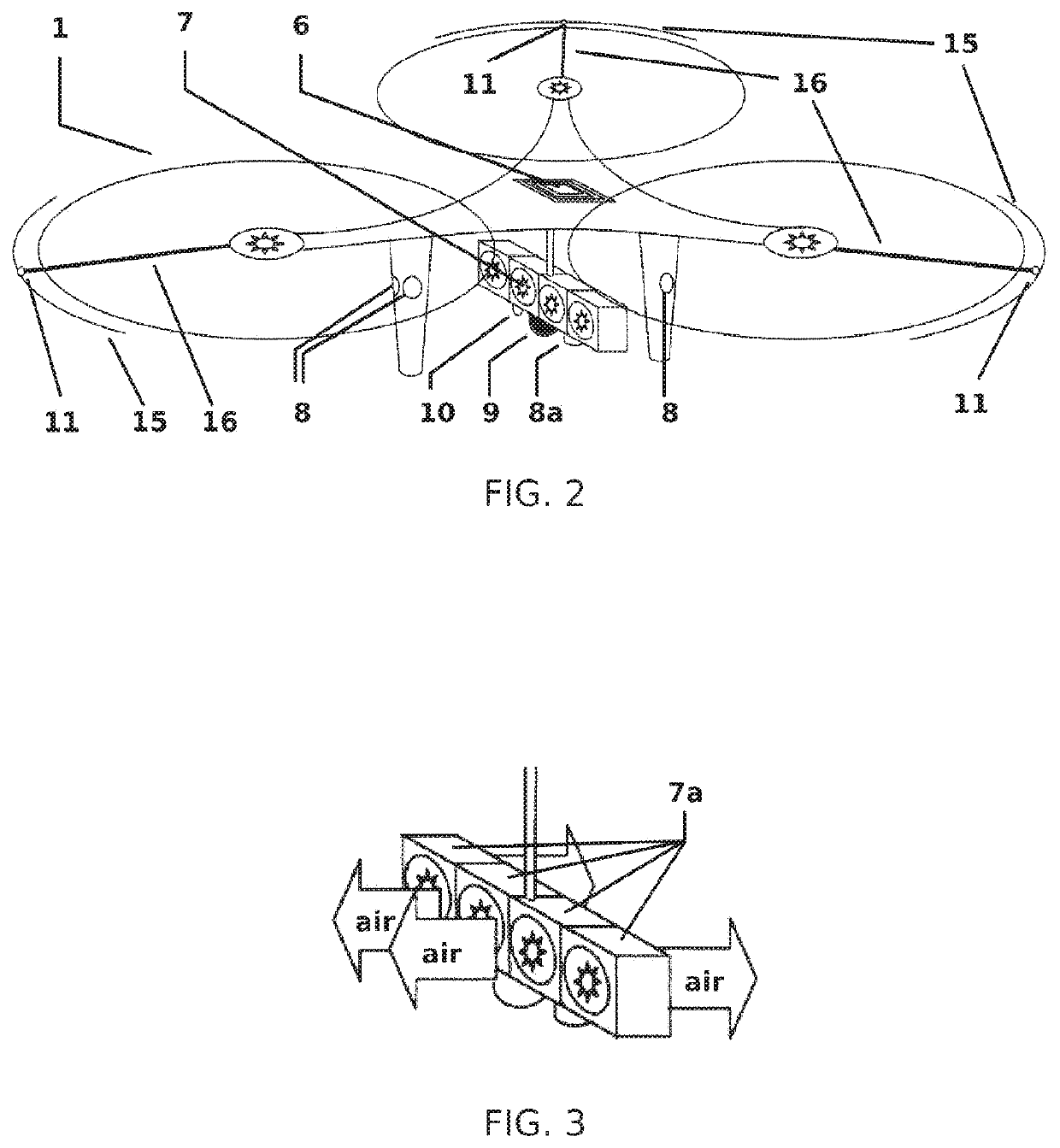Cleaning drone
a technology of cleaning drones and drones, applied in the field of robotics, can solve the problems of weak air lateral flow, and achieve the effect of relieving the user of the task
- Summary
- Abstract
- Description
- Claims
- Application Information
AI Technical Summary
Benefits of technology
Problems solved by technology
Method used
Image
Examples
Embodiment Construction
[0029]The term “surface” is understood to mean a wall formed from any material element (house walls, ornaments, etc.). In practice, a “surface” is determined on the basis of information gathered by the various sensors of the drone. In particular, data arising from the distance sensors that are optionally found on board a drone according to the invention make it possible to limit or to forbid flight trajectories of the drone that are located beyond a (predefined, configured or configurable) distance threshold from any surrounding surface. Stated otherwise, the distance threshold acts as a “virtual wall”. This virtual wall makes the drone turn back toward surfaces from which it has strayed before it goes off on another trajectory on a state diagram.
[0030]The subjacent system used by the method according to the invention comprises at least one drone, which drone according to the invention is modified with respect to the prior art. The drone according to the invention comprises multiple...
PUM
| Property | Measurement | Unit |
|---|---|---|
| wavelength | aaaaa | aaaaa |
| wide-angle | aaaaa | aaaaa |
| distance | aaaaa | aaaaa |
Abstract
Description
Claims
Application Information
 Login to View More
Login to View More - R&D
- Intellectual Property
- Life Sciences
- Materials
- Tech Scout
- Unparalleled Data Quality
- Higher Quality Content
- 60% Fewer Hallucinations
Browse by: Latest US Patents, China's latest patents, Technical Efficacy Thesaurus, Application Domain, Technology Topic, Popular Technical Reports.
© 2025 PatSnap. All rights reserved.Legal|Privacy policy|Modern Slavery Act Transparency Statement|Sitemap|About US| Contact US: help@patsnap.com



